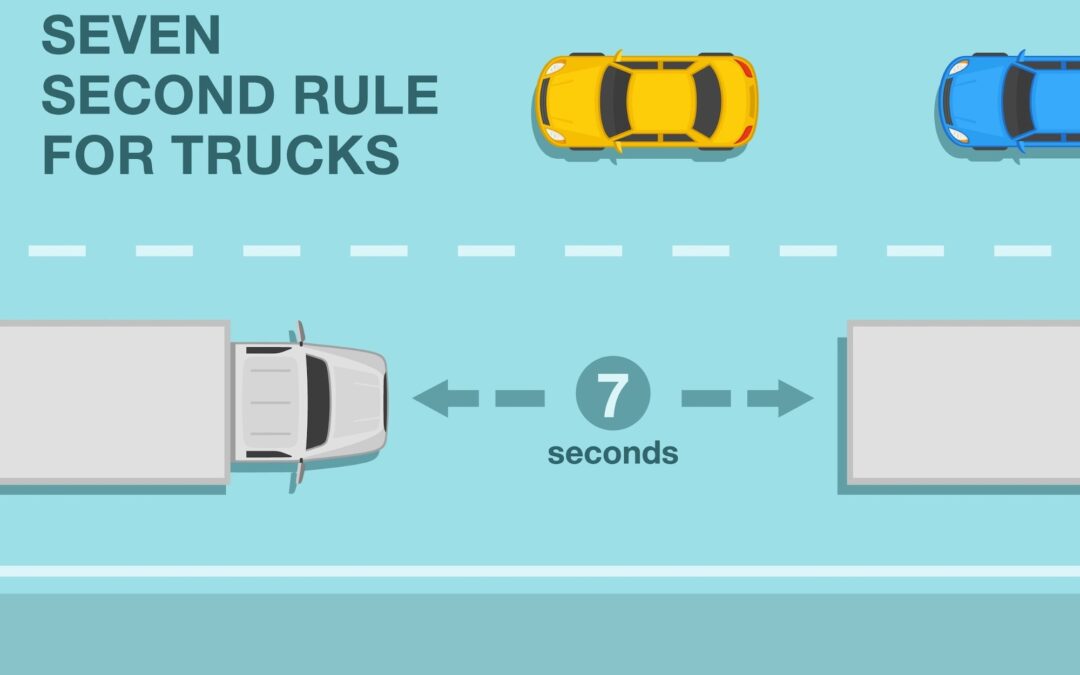According to the U.S. Department of Transportation (DOT), there are approximately 12 million commercial motor vehicles (CMVs) on the roadways. These vehicles are vital to the transportation of goods and materials. However, they present hazards such as safe driving distances for all drivers. Each year in the United States, there are approximately 3,500 people
killed and 80,000 others injured in accidents involving CMVs. Many experts believe that understanding the challenges involving CMVs and adjusting driving behavior can improve safety and decrease the hazards and accidents resulting in death.
Discussion Points:
• What is a “safe following distance”?
• What is the “seven-second rule”?
• What is “situational awareness”?
• How should you determine the “following distance”?
• How should you adjust for adverse road or weather conditions?
Discussion:
A “safe following distance” is between you and the vehicle in front of you. Following too closely can often lead to rear-end collisions. Maintaining a safe following distance is critical to safe driving. The “seven-second rule” is recommended when driving a CMV. This is where situational awareness is accounted for; almost two seconds are applied to reaction time, and the remaining five seconds to maneuver the vehicle as needed and allow adequate braking distance. A safe
following distance should allow the driver time to react to what is happening in front of them and ensure enough space between the CMV and the leading vehicle and sufficient time to slow down or change lanes to avoid an accident. The braking distance can be greatly affected by the weight of the vehicle, poor visibility, road surfaces, debris, and weather conditions such as rain, ice, and snow.
To determine the “following distance”, watch the vehicle in front of you pass a fixed object such as a light pole, a sign, or a tree on the side of the road. When the vehicle in front of you passes the fixed object, start counting the seconds until you have reached the same object. That will determine the following distance, in seconds, between you and the vehicle in front of you. Attempt to maintain at least seven seconds of following distance and double that for adverse conditions.
The FMCSA has determined that a fully loaded truck traveling under normal conditions at highway speeds of 65 miles per hour requires nearly 616 feet or 200 yards to stop; equivalent to two football fields. They also recommend that CMV drivers keep a safe following distance of one second for every 10 feet of vehicle length, with an additional second for speeds over 40 miles per hour, and more time added for adverse road and weather conditions. The chances of a safe trip increase significantly when drivers take the time to prepare themselves and their vehicle before all trips. When you get behind the wheel of a CMV, your first responsibility is to drive safely.
As always, stay safe out there!


Recent Comments